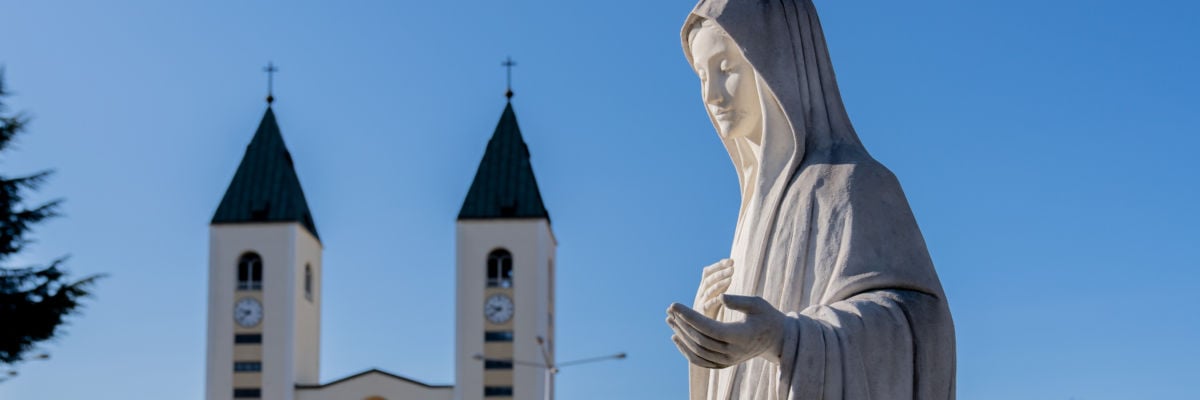
Question:
Answer:
In a September 19, 2024 note, the Dicastery for the Doctrine of the Faith (DDF) approved the “spiritual experience connected with Medjugorje” as a place of pilgrimage, while declining to make a judgment about the supernatural character of the alleged private revelations associated with the shrine:
The uniqueness of the place lies in the large number of such fruits: abundant conversions, a frequent return to the sacraments (particularly, the Eucharist and Reconciliation), many vocations to priestly, religious, and married life, a deepening of the life of faith, a more intense practice of prayer, many reconciliations between spouses, and the renewal of marriage and family life. It should be noted that such experiences occur above all in the context of pilgrimages to the places associated with the original events rather than in meetings with the “visionaries” to be present for the alleged apparitions (3, emphasis added). . . .
While this does not imply a declaration of the supernatural character of the phenomenon in question (cf. Norms, art. 22, §2)—and recalling that the faithful are not obliged to believe in it—the Nihil obstat indicates that the faithful can receive a positive encouragement for their Christian life through this spiritual proposal, and it authorizes public acts of devotion. Such a determination is possible insofar as many positive fruits have been noted in the midst of a spiritual experience, while negative and dangerous effects have not spread among the People of God (38). . . .
In any case, may the people who go to Medjugorje be strongly advised that pilgrimages are not made to meet with alleged visionaries but to have an encounter with Mary, the Queen of Peace, and—faithful to her love for her Son—to encounter Christ and listen to him through meditation on the Word, by participation in the Eucharist, and in Eucharistic Adoration, as happens in so many shrines spread all over the world in which the Virgin Mary is venerated with the most varied titles (41).
Here is a chronology of the events.
In June 1981, the Blessed Mother reportedly began appearing regularly to several children in the town of Medjugorje, which is located in the Diocese of Mostar-Duvno, then part of Yugoslavia. (The diocese is now part of the nation of Bosnia and Herzegovina.)
In 1985, Mostar-Duvno’s bishop Pavao Zanic determined that the apparitions were not authentic, i.e., not of supernatural origin.
In 1991, the bishops’ conference of Yugoslavia ruled that the supernatural character of the reported apparitions could not be affirmed. This is different than a definitive declaration that there is no supernatural character.
Bishop Zanic maintained his position until his retirement in July 1993, when Bishop Ratko Peric succeeded him. Throughout his tenure in Mostar, which lasted until July 2020, Bishop Peric consistently reaffirmed the decision of his predecessor.
Bishop Petar Palic is the current Bishop of Mostar-Duvno, and he has not overturned his predecessors’ decisions.
The Holy See, consistent with the rulings of the local bishops, has allowed pilgrimages to Medjugorje—and in May 2019 Pope Francis formally authorized them—provided they don’t present the reported apparitions as approved by the Church. The Holy See has also forbidden the faithful from participating in events where the reported seers present their reported apparitions as of supernatural origin (see this for more information).
Finally, to reaffirm the September 2024 decision by the DDF, those who have experienced a conversion—or deepening of faith—associated with pilgrimage(s) to Medjugorje should know that the validity of their experiences does not hinge upon whether the reported apparitions are declared of supernatural origin. Indeed, the sacraments are valid at Medjugorje, and the Blessed Mother can—and does—fruitfully intercede for those who seek her sincerely, wherever that may be.



